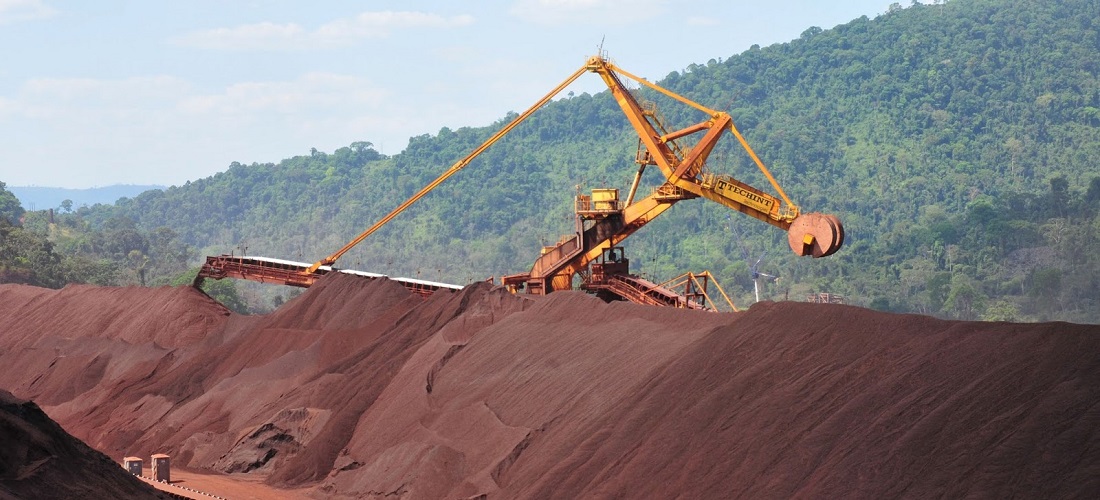
Chinese economic rebound favors Brazilian exports
May, 02, 2023 Posted by Gabriel MalheirosWeek 202320
Brazil’s mineral production in 2023 is expected to not differ much from previous years, according to Júlio Nery Ferreira, director of sustainability and regulatory affairs at the Brazilian Mining Institute (Ibram). The country produced 1.05 billion tonnes of mineral products in 2022, a decrease of 12% compared to 2021. However, revenue and earnings from exports are expected to exceed the previous year’s performance, when the Brazilian mining industry earned BRL 250 billion ($45.5 billion) and generated revenues of $41.67 billion from international sales, a decrease of 27.9% from 2021.
The average price of iron ore in 2023 is expected to be around $120 per tonne, aiding in recovering international revenues. Iron ore accounts for approximately 67% of Brazilian mineral exports and plays a major role in determining the industry’s trade balance. In the first quarter of 2023, the country exported 75.2 million tonnes of iron ore, down 15.1% from the previous quarter, while revenue stood at $6.2bn, up 4.5% higher.
The decrease in shipments in the first quarter of 2023 is directly correlated to reduced ore extraction due to excessive rainfall, according to Nery. However, international prices are pretty much pegged to Chinese demand, which accounts for more than 50% of global steel production and is the destination for 62% of Brazilian iron.
See below Brazil’s exports of iron ore (hs 2601) to China between Jan 2019 and Mar 2023, according to the DataLiner data service.
Iron ore exports to China | Jan 2019 – Mar 2023 | WTMT
Source: DataLiner (click here to request a demo)
In 2022, China’s gross domestic product (GDP) grew by 3%, its worst performance in 50 years, leading to a decline in mineral purchases. However, in the first quarter of 2023, the Chinese economy exceeded expectations, growing by 4.5%, promoting a recovery of international ore prices.
The positive indications of the Chinese economy do not paint a clear picture regarding the behavior of iron ore demand throughout the year. “Projections indicate that Chinese steel production will decline by 2.5%,” says Nery. The possible decline in Chinese steel production is directly associated with the country’s need to reduce air pollution.
On the other hand, the recovery of the Chinese economy generates expectations of increased purchasing power for its massive population of 1.4 billion people, culminating in a higher demand for durable goods, real estate, and infrastructure. “China is growing again at a pace rapid enough to sustain iron ore prices,” says Ricardo Marques, mining leader at KPMG.
In the first quarter of 2023, the total revenue of the Brazilian mineral industry was BRL 54.6bn ($9.9bn), a 3% decrease compared to the same period in 2022. Exports totaled $9.2bn, 2.9% less than last year’s first quarter. On the other hand, physical shipments totaled 7.5 million tonnes, an increase of 4.2% compared to the first quarter of 2022.
Gold, the second item on the country’s mineral export agenda, accounts for approximately 10% of international revenue earned and yet performed poorly in the first quarter of the year, with shipments of 19.6 tonnes and revenue of $941 million, down 8.4% in volume and 18.3% in revenue from the same period in 2022. “There was a specific problem in the production of one miner, and the situation is expected to normalize in the following year,” says Nery.
AngloGold Ashanti has suspended gold processing at its Queiroz plant in Nova Lima, Minas Gerais, to reinforce its tailings dam. Queiroz is part of the Cuiabá mining complex, which produced 241,000 ounces of gold in 2022. In total, the company produced 399,000 ounces in the country in 2022, equivalent to 12.5 tons of gold.
Copper and niobium were, respectively, the third and fourth most exported mineral substances in the first quarter of the year. Copper shipments yielded $724.4 million, a 14.2% increase compared to the first quarter of 2022, while niobium exports totaled $609.9 million, a 7.7% growth compared to the same period last year.
Imports in the first quarter totaled 9.35 million tonnes and generated an expense of $2.9 billion, a 3.2% decrease in volume and 10.1% in values. Potassium accounted for the largest share of mineral imports, 42%, followed by coal at 37%. The mineral trade balance surplus was $6.32 billion in the quarter, 1% higher than the initial quarter of 2022.
Source: Valor Econômico
To read the original news article, see: https://valor.globo.com/publicacoes/suplementos/noticia/2023/04/28/retomada-da-economia-chinesa-favorece-exportacoes.ghtml
-
Meat
Oct, 05, 2022
0
Brazilian chicken meat exports revenue up 12.4% YoY
-
Ports and Terminals
Aug, 21, 2020
0
CODEBA divulges upcoming auction for dredging work at Ilhéus Port in Bahia
-
Ports and Terminals
Oct, 07, 2021
0
Santos waste being used to produce Eco-alcohol
-
Ports and Terminals
Mar, 07, 2023
0
Audit court brings Port of Santos privatization back to debate

